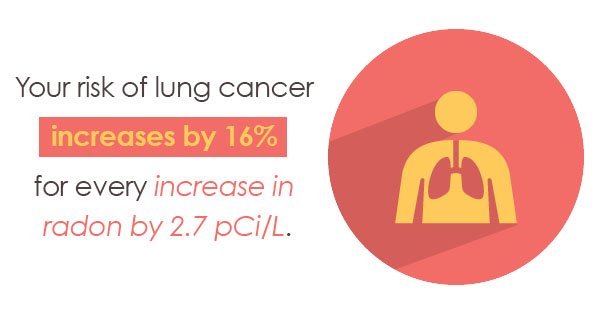
Radon is a naturally occurring gas created during the breakdown of uranium. Radon can be pulled into a family home from the ground and the home’s foundation. Because radon is odorless, colorless, tasteless, and radioactive, this buildup of gas in the home can be dangerous.
Radon is the second leading cause of lung cancer in the United States, according to the Surgeon General. This is because radon is a carcinogen. The lower the radon test results in your home, the lower your risk of lung cancer.
But what radon test results are considered the best results? And how do you know when the radon level in your home is safest?
Radon Test Results: What Is Safe?
No level of radon gas is truly safe. The average level of radon gas in the U.S. in an outside location is 0.4 pCi/L. However, depending on where you live, the level of radon gas in your location may be as high as 0.75 pCi/L.
According to the National Academy of Sciences, radon levels in the outside air cause up to 800 out of 21,000 annual lung cancer deaths in the United States. This is only the air you’re breathing outside. When radon is inside the home, the concentration grows and exposes you to higher levels of radon. Your risk of lung cancer increases by 16% for every increase in radon by 2.7 pCi/L.
Radon Test Results: What Is Acceptable?
The target level for radon gas is 0.4 pCi/L, which is the natural level for radon outdoors. However, many homes in the U.S. have a higher level of radon gas. According to the Environmental Protection Agency, American homeowners should take action should their radon levels exceed 4.0 pCi/L. But this level of radon is not acceptable nor safe.
To reduce the risk of lung cancer deaths by radon, it’s recommended that radon levels in the home be reduced under 2.0 pCi/L. To reduce the concentration of radon in your home, it’s recommended you perform residential radon testing to determine your levels. Once your results have been determined, a radon abatement service can help you reduce your levels to a less dangerous concentration.
If your radon levels are higher than 2.0 pCi/L, it’s recommended that you receive radon mitigation. For more information on radon abatement and mitigation, contact Affordable Radon Colorado for a consultation today.

Recent Comments